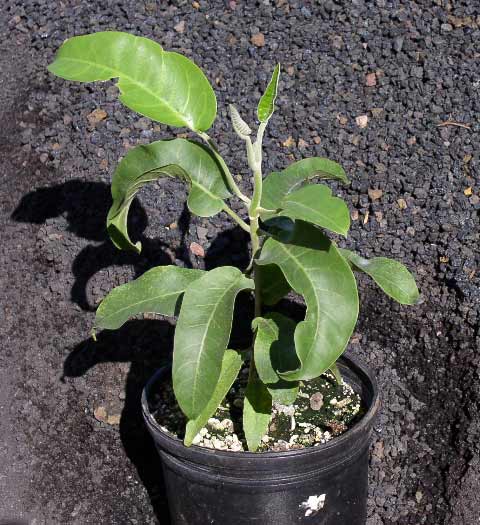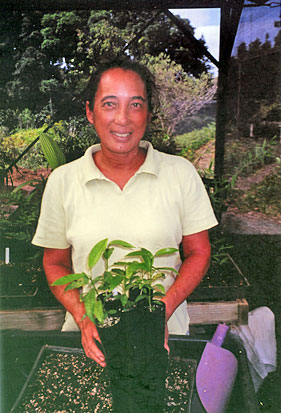July 2006
|
| 2004 |
 |
 |
|
| February 11, 2004: Melicope knudsenii 14 month old plant to be planted at Pu’u Mahoe. | January 19, 2004: Melicope knudsenii germination. |
|
Media: Sunshine #4
Seed treatment: Scarified and soaked for 4 days Days to germination: 64 days (20% germination as of 1/19/04) Fertilizer: 1/2 strength Peters 20-20-20 twice weekly Light: Under 50% shade fabric No pesticides or fungicide used to date |
November 3, 2003
The Seed Dormancy Master WorkshopThis past May, D.T. Fleming Arboretum sponsored my attendance to a two-day workshop on Seed Dormancy at the University of Hawaii. The workshop was put on by the U.H. Botany Department and The Center for Conservation and Training; Drs. Carol and Jerry Baskin from the University of Kentucky conducted the workshop. Attendance was high and included propagation specialists from all the islands, it was a great opportunity to learn and share information among the attendees.
A classification system of dormancy was covered in the workshop, five classes are recognized, these were further broken down into various levels and types. Techniques for dormancy release and germination were covered for each class. For example, in physical dormancy the seed embryo is fully developed and the seed coat is not permeable to water. When working with seeds in this class germination occurs when the seed coat is scarified. In comparison, seeds with morphological dormancy (undeveloped embryos) require about 30 days of simulated autumn, spring or summer habitat temperatures before they will germinate.
The Baskins have been studying dormancy and germination of seeds of Hawaiian montane plants, and some non-montane plants as well. As mentioned above, one of the methods they have been using is temperature cycling to bring about good germination results in some seeds. This method subjects seeds to alternating temperature regimes over varying length of time in a lab, somewhat duplicating seasonal conditions outdoors. Drs. Carol and Jerry Baskin have recently produced a table summarizing what is known about dormancy in some Hawaiian seeds, more data will be added as time goes on.
For many Hawaiian plants, seed dormancy is an important consideration in conservation and management. A 93 page booklet was printed for the workshop, if you would like information from this booklet or about other work pertaining to seed conservation, please contact: hoolawa@hawaii.rr.com.

